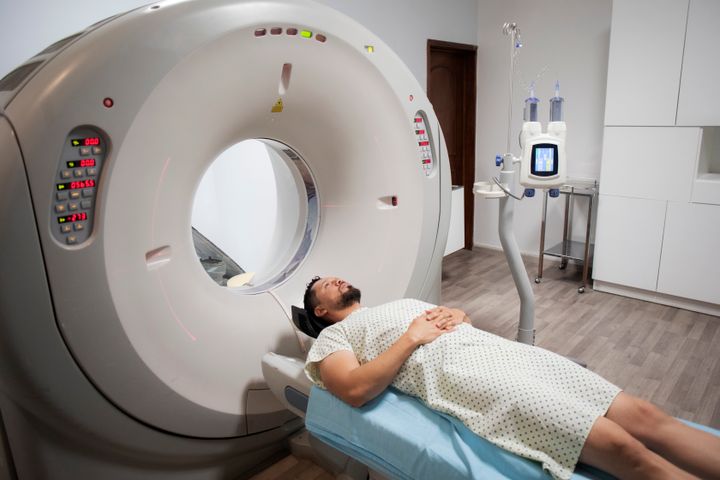
According to Mayo Clinic, CT scan machines are used for an array of purposes including diagnosing muscle and bone disorders, such as bone tumours and fractures, pinpointing the location of a tumour, infection or blood clot – or to guide procedures such as surgery, biopsy and radiation therapy.
These machines are incredibly impressive and have only been around for a short 50 years. They have been a revolution in diagnosis and treatment of patients all around the world but, how do they actually work?
Thankfully, surgeon and TikTok creator Dr Karan Raj has the answers that we’re looking for.
How CT scan machines actually work
In a video posted on TikTok last month, the surgeon explains how the scanners work and why they move so quickly. Showing the first CT scan, taken in 1971, he revealed that it took five minutes to capture a still image of somebody’s brain and even with all that time, it was terrible.
However, he explains that CT scanners now capture data at around 200 milliseconds, meaning five rotations per second. So, the faster the machine spins, the higher the image quality, because of a reduction in motion blur.
Motion blur occurs because organs... move. He says “the heart, the lungs, even the intestines, yes your intestines spontaneously wiggle like worms.” Lovely.
He goes on to say that patients move too because it’s impossible to lie perfectly still.
To further explain, he says to think of the spin rate on a CT scanner like the shutter speed of a camera. The slower the shutter, the longer it stays open to let light in. This light then creates blurry images from all the movement. The faster the shutter moves, the less time there is for movement and the better the measurement data.
Why can’t we see this in motion when we go for a CT scan? Well, “because it looks scary as hell”.
Fair.